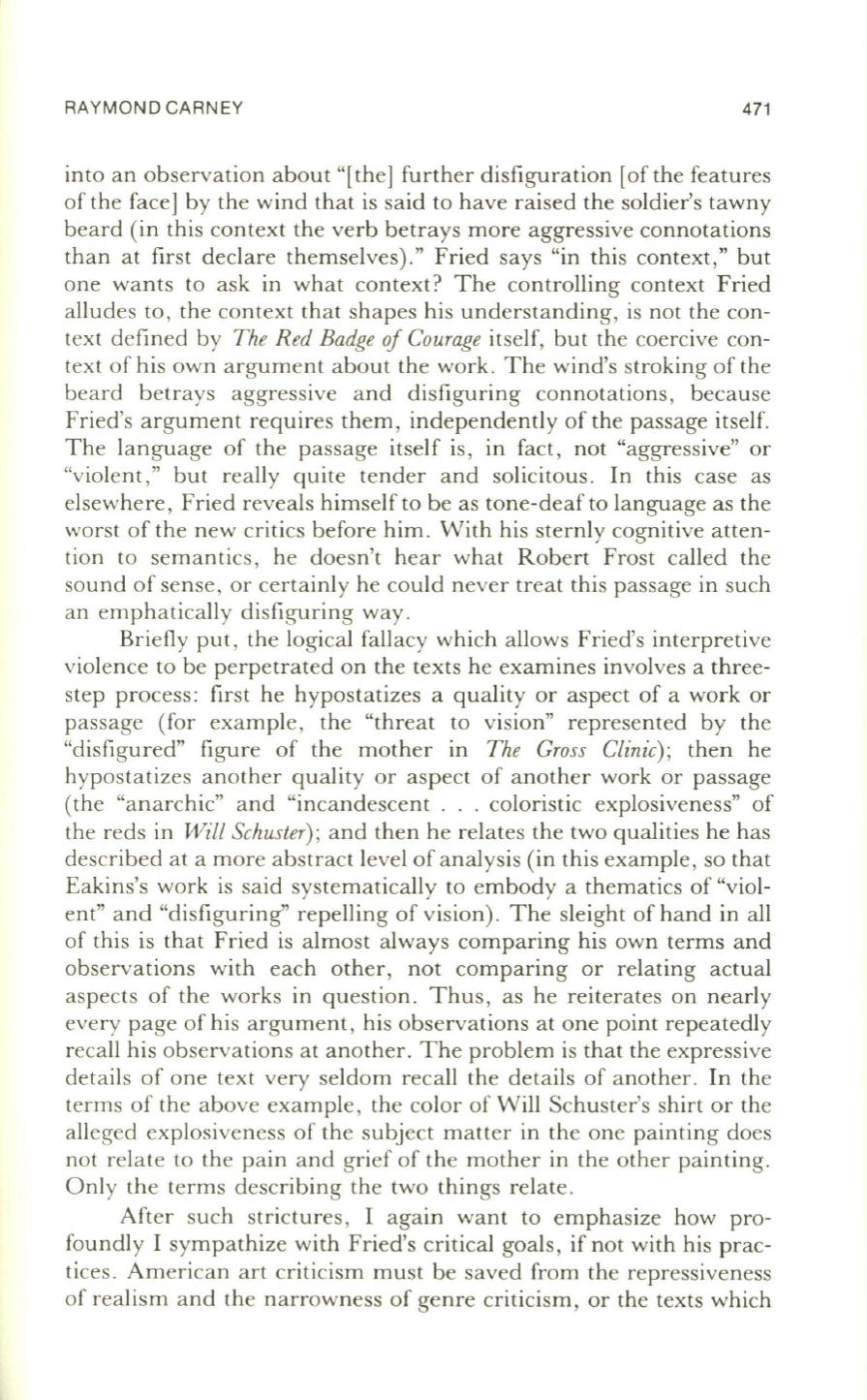
RAYMOND CARNEY
471
into an observation about "[ the
1
further disfiguration [of the features
of the face
1
by the wind that is said to have raised the soldier's tawny
beard (in this context the verb betrays more aggressive connotations
than at first declare themselves)." Fried says "in this context," but
one wants to ask in what context? The controlling context Fried
alludes to, the context that shapes his understanding, is not the con–
text defined by
The Red Badge oj Courage
itself, but the coercive con–
text of his own argument about the work. The wind's stroking of the
beard betrays aggressive and disfiguring connotations, because
Fried's argument requires them, independently of the passage itself.
The language of the passage itself is, in fact, not "aggressive" or
"violent ," but really quite tender and solicitous . In this case as
elsewhere , Fried reveals himself to be as tone-deaf to language as the
worst of the new critics before him . With his sternly cognitive atten–
tion to semantics, he doesn't hear what Robert Frost called the
sound of sense, or certainly he could never treat this passage in such
an emphatically disfiguring way.
Briefly put, the logical fallacy which allows Fried's interpretive
violence to be perpetrated on the texts he examines involves a three–
step process: first he hypostatizes a quality or aspect of a work or
passage (for example , the "threat to vision" represented by the
"disfigured" figure of the mother in
The Gross Clinic);
then he
hypostatizes another quality or aspect of another work or passage
(the "anarchic" and "incandescent ... coloristic explosiveness" of
the reds in
Will Schuster);
and then he relates the two qualities he has
described at a more abstract level of analysis (in this example, so that
Eakins's work is said systematically to embody a thematics of "viol–
ent" and "disfiguring" repelling of vision) . The sleight of hand in all
of this is that Fried is almost always comparing his own terms and
observations with each other, not comparing or relating actual
aspects of the works in question. Thus, as he reiterates on nearly
every page of his argument, his observations at one point repeatedly
recall his observations at another. The problem is that the expressive
details of one text very seldom recall the details of another. In the
terms of the above example, the color of Will Schuster's shirt or the
alleged explosiveness of the subject matter in the one painting does
not relate to the pain and grief of the mother in the other painting.
Only the terms describing the two things relate.
After such strictures , I again want to emphasize how pro–
foundly I sympathize with Fried's critical goals, if not with his prac–
tices. American art criticism must be saved from the repressiveness
of realism and the narrowness of genre criticism, or the texts which


